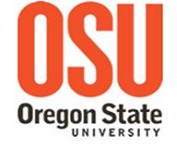- Dr. Stacey Harper received a five-year, $3.3 million award from the National Science Foundation to study the risks of micro- and nanoplastics to aquatic organisms in the pacific northwest.
- Dr. Stacey Harper received a five-year, $1.9 million award as an Outstanding New Environmental Scientist (ONES) from the National Institute of Environmental Health Sciences (NIEHS) and was selected as 2013 recipient of the L.L. Stewart Faculty Scholars Award which recognizes an outstanding faculty members at Oregon State University.
You are here
Reactive oxygen species generation is likely a driver of copper based nanomaterial toxicity.
| Title | Reactive oxygen species generation is likely a driver of copper based nanomaterial toxicity. |
| Publication Type | Journal Article |
| Year of Publication | 2018 |
| Authors | Denluck L, Wu F, Crandon LE, Harper BJ, Harper SL |
| Journal | Environ Sci Nano |
| Volume | 5 |
| Issue | 6 |
| Pagination | 1473-1481 |
| Date Published | 2018 Jun 01 |
| ISSN | 2051-8153 |
| Abstract | Determining the specific nanomaterial features that elicit adverse biological responses is important to inform risk assessments, develop targeted applications, and rationally design future nanomaterials. Embryonic zebrafish are often employed to study nanomaterial-biological interactions, but few studies address the role of the chorion in nanomaterial exposure and toxicity. Here, we used chorion-intact (CI) or dechorionated (DC) embryonic zebrafish to investigate the influence of the chorion on copper-based nanoparticle toxicity. We found that despite higher dissolution and uptake, CuO NPs were less toxic than Cu NPs regardless of chorion status and did not cause 100 % mortality at even the highest exposure concentration. The presence of the chorion inhibited Cu toxicity: DC exposures to Cu NPs had an LC of 2.5 ± 0.3 mg/L compared to a CI LC of 13.7 ± 0.8 mg/L. This highlights the importance of considering zebrafish chorion status during nanotoxicological investigations, as embryo sensitivity increased by one order of magnitude or more when chorions were removed. Agglomerate size, zeta potential, and dissolved Cu did not sufficiently explain the differences in toxicity between Cu NPs and CuO NPs; however, reactive oxygen species (ROS) generation did. Cu NPs generated ROS in a concentration-dependent manner, while CuO did not and generated less than Cu NPs. We believe that the differences between the toxicities of Cu NPs and CuO NPs are due in part to their ability to generate ROS which could and should be a hazard consideration for risk assessments. |
| DOI | 10.1039/C8EN00055G |
| Alternate Journal | Environ Sci Nano |
| PubMed ID | 30455956 |
| PubMed Central ID | PMC6239169 |
| Grant List | P30 ES000210 / ES / NIEHS NIH HHS / United States R01 ES017552 / ES / NIEHS NIH HHS / United States T32 ES007060 / ES / NIEHS NIH HHS / United States |
Theme by Danetsoft and Danang Probo Sayekti inspired by Maksimer
